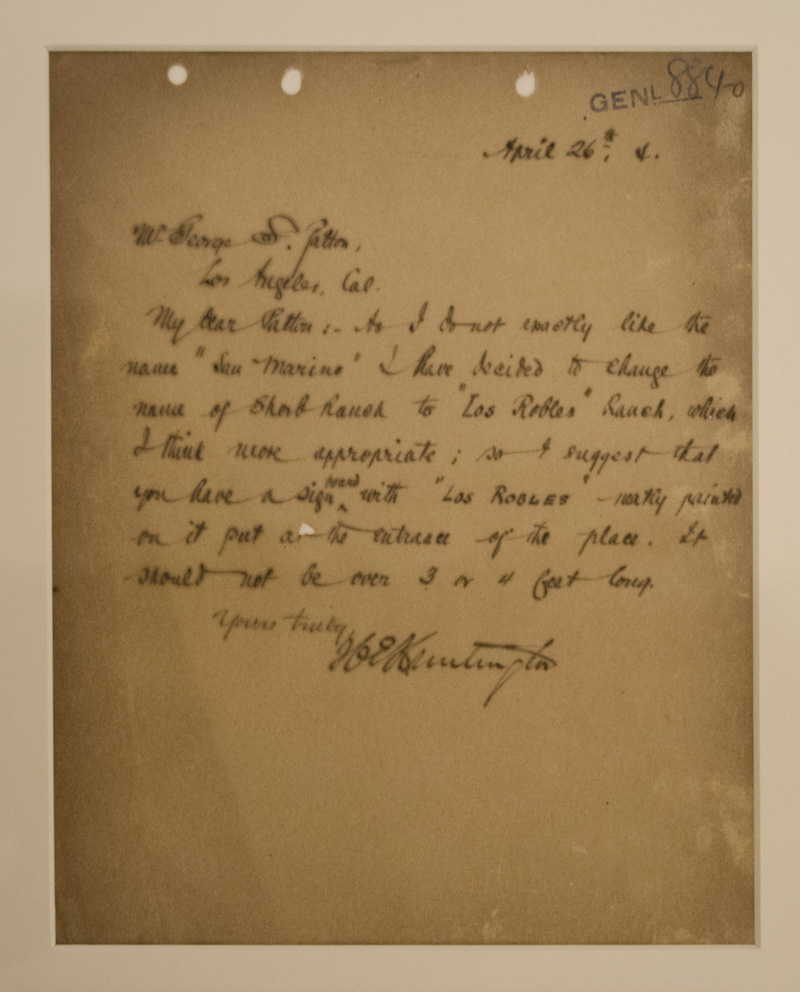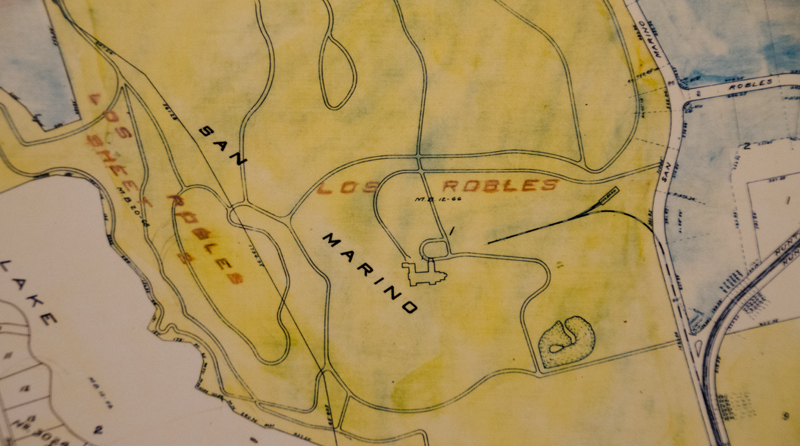The Huntington’s blog takes you behind the scenes for a scholarly view of the collections.
EXHIBITIONS | Welcome to Los Robles Library, Art Collections, and Botanical Gardens
Posted on Fri., April 26, 2013 by

Henry E. Huntington, letterpress copy of letter to George S. Patton, April 26, 1904. Huntington Library, Art Collections, and Botanical Gardens.
I came across quite a few interesting pieces when I was researching my current exhibition, “Cultivating California: Founding Families of the San Marino Ranch.” When I was researching George S. Patton (senior), I stumbled upon an item that was begging to be displayed. On an onion-skin sheet dated April 26, 1904, Henry E. Huntington writes:
My dear Patton: As I do not exactly like the name “San Marino” I have decided to change the name of Shorb Ranch to “Los Robles” Ranch, which I think more appropriate; so I suggest that you have a sign board with “Los Robles” neatly painted on it put at the entrance of the place. It should not be over 3 or 4 feet long.
Yours truly, H. E. Huntington
This little memo, dashed off in Huntington’s own hand, explains why Huntington’s personal letterhead says “Los Robles” and not “San Marino.” And it makes one wonder why Huntington wanted to change the name and when it went back to San Marino.
I suspect Huntington wanted to separate the property from its past. The man who named the property, James De Barth Shorb, was deeply in debt when he died in 1896. His wife, Maria de Jesus “Sue” Wilson Shorb, lost the property in foreclosure to Farmers and Merchants Bank after a well-publicized trial. If I purchased a property with such a history, I would change the name, too.
But San Marino—as both the estate of James De Barth Shorb and the property surrounding the home—was very well known and had been since the 1880s. It was a familiar location for people throughout Southern California and was regularly referenced in the society pages of the Los Angeles newspapers. San Marino was not going to disappear, even if Huntington tore down the three-story Victorian mansion in 1906.

Detail from a 1913 map of the city of San Marino. When the city of San Marino was founded in 1913, Henry E. Huntington and his Huntington Land and Improvement Company owned a large portion of the land. In this map, Huntington's ranch is labeled both Los Robles and San Marino.
When Huntington purchased San Marino/Los Robles in 1903, he already owned a large estate in downtown Los Angeles. The San Gabriel Valley property was an investment—land for crops until it could be subdivided and sold for enormous profit. I imagine that when Arabella Huntington started advising Henry Huntington on his new home, she recommended a country house akin to those in Newport, R.I.—an impressive manse surrounded by acres of land. And Arabella always had a flare for the dramatic, so Los Robles (which even today I’m sure I mispronounce: is it ROBE-els or ROBE-leis?) would not do.
Come 1913, the maps show the property as both San Marino and Los Robles. Huntington’s dislike for the name “San Marino” must have waned enough for him to agree that the new city could be called by that name. I also suspect that he enjoyed naming the new city after a very wealthy sovereign nation surrounded by Italy, as his new city was in a similar situation: a very wealthy enclave surrounded by other cities (Pasadena, South Pasadena, and Alhambra, to be specific) interested in annexing the estates for themselves.
"Cultivating California" is on display through May 13, 2013, in the West Hall of the Library.
Jennifer Allan Goldman is a manuscripts curator and the institutional archivist at The Huntington.